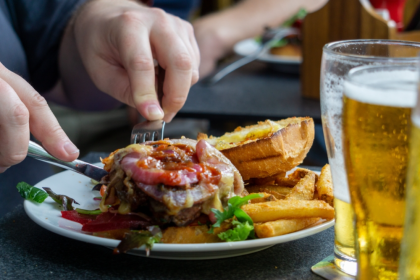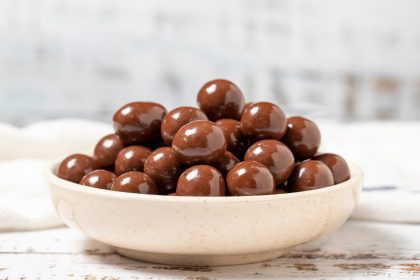You reach for that zero-calorie sweetener thinking you’re making the smarter choice. That little yellow packet promising sweetness without the guilt. The diet soda that lets you enjoy flavor without the sugar crash. But what if that “healthy” swap is actually making you hungrier?
Emerging research has uncovered something truly surprising about sucralose, that popular sweetener hiding in everything from your morning coffee to your favorite “diet-friendly” treats. Your brain might be getting seriously confused by these fake sugars, potentially triggering hunger signals that leave you reaching for more food throughout the day.
When your brain can’t tell the difference
Think about it. For thousands of years, sweetness meant calories were coming. Your brain evolved to recognize that relationship so firmly that when something sweet touches your tongue, your entire system gears up for an energy infusion. Your brain essentially says, “Sweet stuff incoming. Get ready to process those calories.”
But with artificial sweeteners like sucralose, that evolutionary relationship gets completely disrupted. Your taste buds register intense sweetness, roughly 600 times sweeter than table sugar. Your brain expects a corresponding calorie payload. When those calories never arrive, your entire system gets thrown into confusion.
Recent brain imaging research from the University of Southern California has captured this confusion in real time. When people consumed sucralose-sweetened drinks, their hypothalamus lit up with activity. This small but mighty brain region serves as your body’s primary hunger control center. When it activates like this, it’s essentially broadcasting the message “still hungry” throughout your system.
Not everyone responds the same way
Here’s where things get even more interesting. The research team found that different bodies respond differently to these fake sugars. People at a healthy weight showed the strongest brain response to sucralose, with their hunger centers activating significantly more than when they drank regular sugar.
People carrying extra weight showed a completely different pattern. Their brains didn’t distinguish much between real sugar and sucralose, suggesting their hunger regulation systems might already be working differently.
Gender differences emerged too. Women displayed stronger brain reactions to the artificial sweetener than men did. These variations highlight the complex relationship between sweeteners and our bodies, suggesting that one-size-fits-all dietary advice about these products might miss the mark completely.
The hunger games in your kitchen
The real-world implications become clear when you look at hunger ratings from the study. Participants reported feeling hungrier after consuming the sucralose-sweetened drink compared to the sugar drink. This lines up perfectly with what many people report anecdotally when using artificial sweeteners, that nagging sense that something is missing, that their appetite never quite feels satisfied.
This might explain the puzzling experience many people have when trying to use diet products for weight loss. The zero-calorie beverage might save you 150 calories in the moment, but if it triggers increased hunger that leads you to eat an extra 300 calories later, the math simply doesn’t work out in your favor.
Your body expects certain hormonal responses after consuming sweet foods, particularly the release of fullness signals. When those hormonal shifts don’t happen because no actual sugar entered your system, your body might keep searching for the satisfaction it was promised but never received.
The weight management paradox
With obesity affecting roughly one in five American adults and weight management being a priority for millions of people, these findings carry significant implications. Many people turn to products with sucralose and other artificial sweeteners specifically because they’re trying to manage their weight.
The hard truth is that these products might be working against that very goal. By potentially increasing hunger signals without delivering the satisfaction of real food, they could be setting up a metabolic mismatch that makes consistent healthy eating more difficult, not easier.
This mismatch affects everyone, but it’s particularly relevant for communities already facing higher rates of obesity and nutrition-related health challenges. As more people seek healthier dietary options, understanding how ingredients like sucralose affect hunger and eating behavior becomes crucial for making truly beneficial changes.
What the experts are saying
Medical professionals are increasingly cautious about recommending artificial sweeteners as weight management tools. The conventional wisdom that simply swapping regular soda for diet versions would lead to easy weight loss is being challenged by mounting evidence about how these compounds affect hunger regulation.
The newest thinking suggests that our brains process these non-caloric sweeteners in ways remarkably similar to how they process sugar, at least in terms of activating reward pathways. The key difference is that without actual energy delivery, the cycle remains incomplete, potentially leaving us wanting more.
Some nutrition experts now advocate for gradually reducing overall sweetness in the diet, rather than simply swapping real sugar for artificial versions. This approach aims to reset taste preferences over time, allowing people to appreciate the natural sweetness in foods like fruits without craving the intense sweetness of either sugar or its artificial alternatives.
Making smarter choices beyond the sweetness
As research continues to evolve, the most prudent approach might be moderation with all sweeteners, both natural and artificial. Rather than viewing sucralose and similar products as perfect sugar substitutes, consider them occasional tools within a broader eating pattern focused on nutrient-dense whole foods.
For those actively trying to manage their weight, being mindful of how these sweeteners affect personal hunger levels can provide valuable insights. Some people might notice increased cravings after using them, while others might experience no difference. Paying attention to your body’s unique responses can help you determine whether these products are truly supporting your health goals.
The conversation about sucralose and hunger is part of a larger shift toward understanding food not just as calories and nutrients, but as information that communicates with our bodies in complex ways. Every bite or sip sends signals that influence everything from immediate hunger to long-term metabolic health.
By staying informed about emerging research and listening to your body’s responses, you can navigate the sweetener landscape more effectively, making choices that truly support your wellbeing rather than potentially undermining it without your awareness.
















